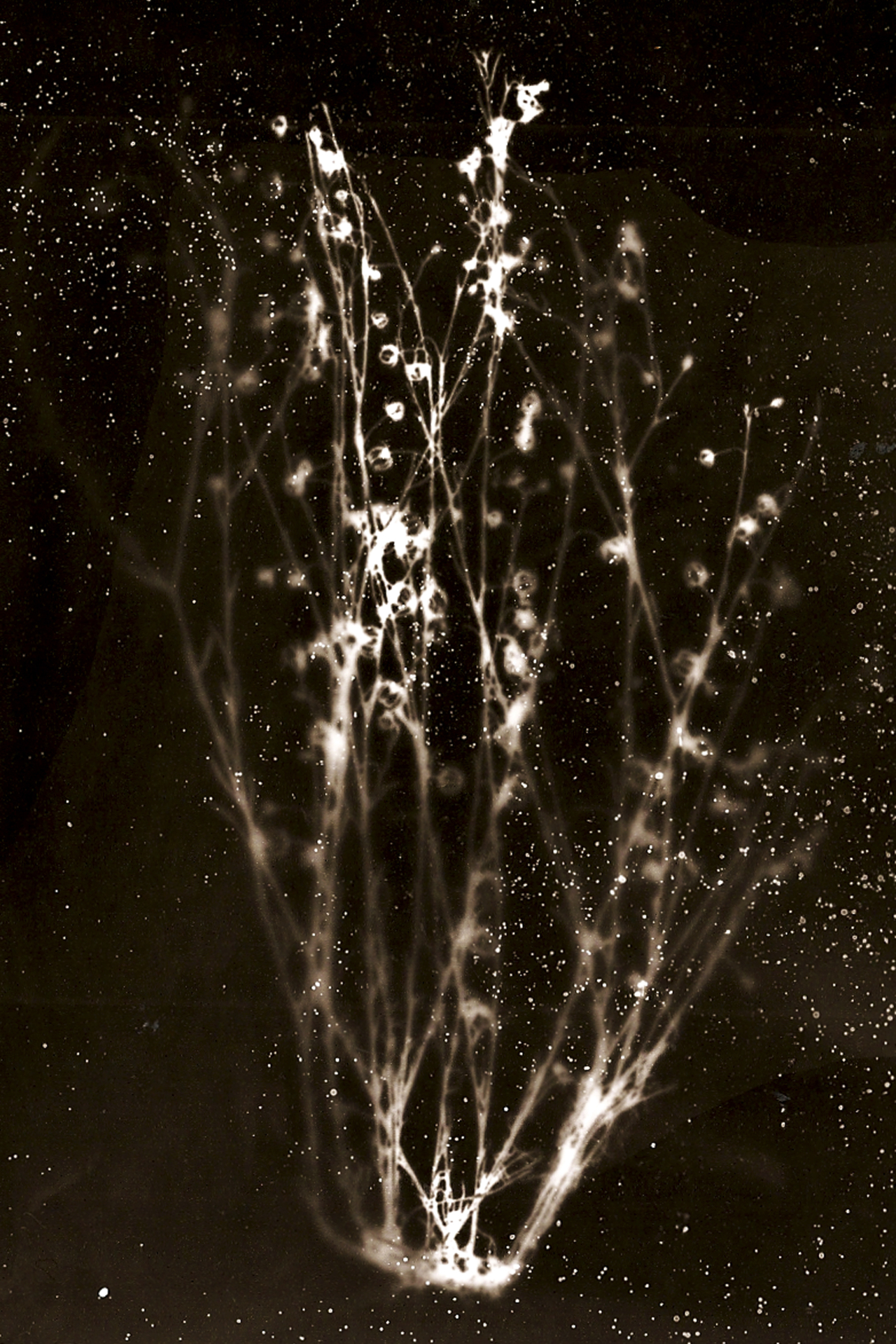A tree welcomes visitors to the Nam June Paik Art Center’s latest exhibition, but it doesn’t produce any oxygen. Paik’s “Apple Tree,” made using 33 TV monitors, emits only electronic images.
Exhibition “Ecological Sense” at Nam June Paik Art Center questions how we should perceive our current ecological system. The museum also noted that the exhibition aims to make the audience more sensitive to the changes in our ecological system.
It features works by 10 artists and artist groups: Paik, Lee So-yo, Rice Brewing Sisters Club, Listen to the city, Park Min-ha, Park Sun-min, Anais Tondeur, Yoon Ji-young, Jenin Kii and Cho Eun-ji.
 |
Paik Nam-june‘s “Apple Tree” (Nam June Paik Art Center) |
Next to Paik’s tree is Lee So-yo’s “TV Garden: Notes” (2019), a research-based work consisting of jars with plants preserved in industrial ethanol.
This installation is Lee’s direct comment on Paik’s “TV Garden,” a large installation on display in the first-floor lobby of the Nam June Paik Art Center that comprises a set of TV screens within an artificial garden full of broad-leafed plants.
Lee paid special attention to the garden part of Paik’s installation and made efforts to make the small ecosystem more visible -- one that plants inhabit together with bacteria, insects and even a small snail.
For the project, Lee considered Paik’s work as a small ecosystem and surveyed the plants shown on the TV screens. Yet she used real plants to better visualize the living organisms.
French artist Anais Tondeur introduces work from her photograph projects “Carbon Black” and “Chernobyl Herbarium.”
“Carbon Black” comprises a series of black-and-white photos taken during a 1,350-kilometer trip on foot from Fair Isle, the northernmost island of Scotland, to the harbor of Folkestone on the southeast coast of England.
The artist and her colleagues used breathing masks to trap carbon particles and later transformed them into ink to print the black-and-white photographs.
 |
“Linum Usitatissimum,” one of rayograms from “Chernobyl Herbarium“ by Anais Tondeur (Nam June Paik Art Center) |
“Chernobyl Herbarium” is a photo series composed of 31 rayograms, which show plants growing in the highly radioactive Chernobyl Exclusion Zone.
“Chernobyl Herbarium” is based on the research of Martin Hajduch at the Slovak Academy of Sciences, who studied the impact of radioactivity on the flora.
South Korean artist Cho Eun-ji shows work she produced in Indonesia. In her video works, Cho highlights a cow and octopus and suggests alternative relationships that humans can form with them.
Cho’s video “Cow Bathing for Spring Day” (2018) includes video footage of a person washing a cow, with the camera focusing on the physical interactions between the two.
“Every time I see cows in Korea, I feel uncomfortable as I know that they live only to be slaughtered at the end. It was rather a fear I felt when watching them,” Cho said.
Another video work, which is shown on both sides of the screen, is titled “Octopus Ecstasy.” In this video, which is based on the Indonesian myth that every newborn baby has a twin brother in the form of an octopus, Cho encourages the audience to imagine the language and perspective of the nonhuman entity.
Also shown in the exhibition is Park Sun-min’s “Architecture of Mushroom” (2018), a low angle, slow-motion shot of mushrooms growing in the Gotjawal forest in Jeju, Korea, taken over a year in 2017. The video, which highlights the architectural elements of mushrooms, is designed to allow the audience to look into the ecological system at a very low level.
By Shim Woo-hyun (
ws@heraldcorp.com)









